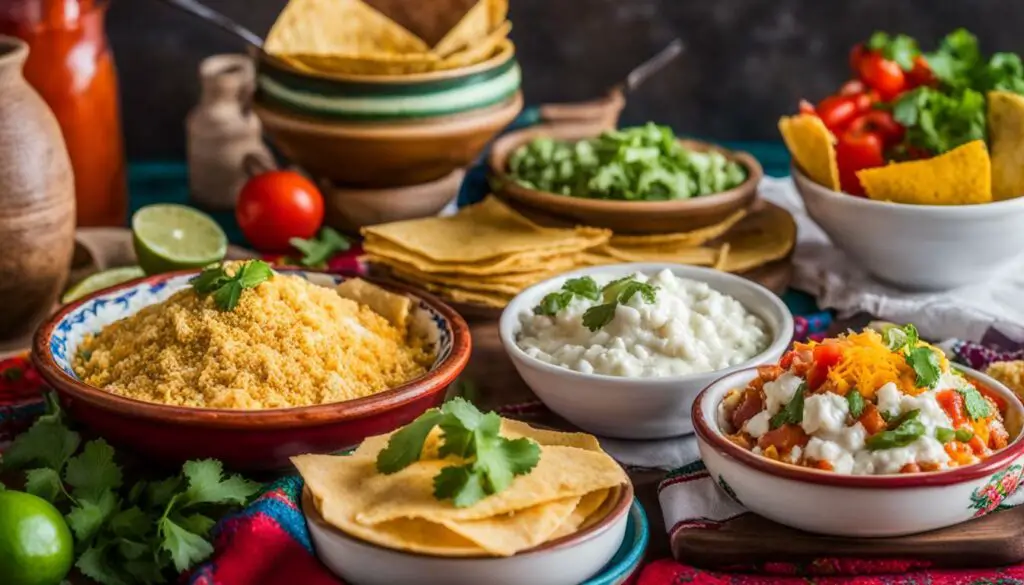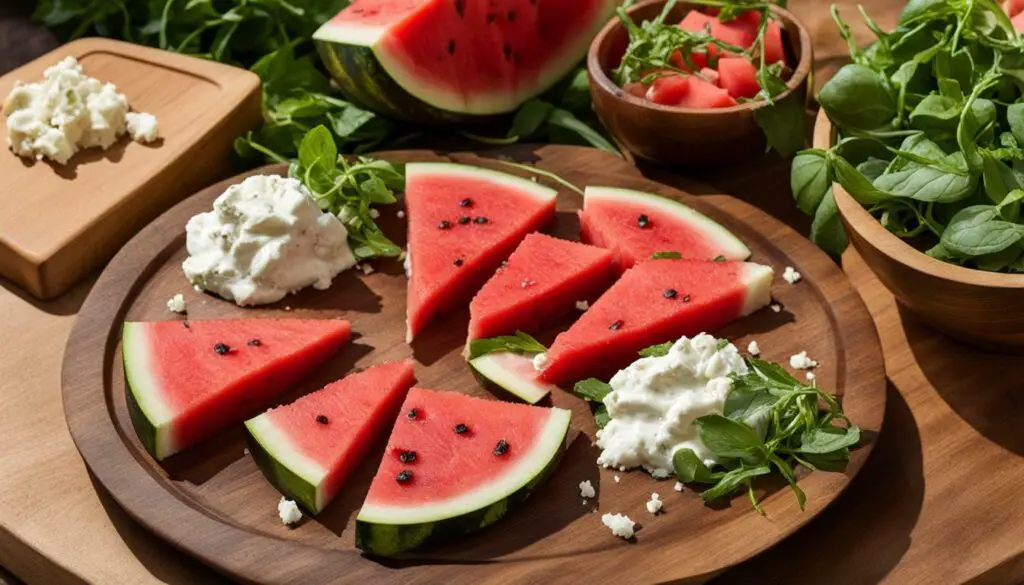Looking to add a fresh and tangy flavor to your dishes? Let’s dive into the world of queso fresco and ask ‘what is queso fresco used for?’
Key Takeaways:
Contents
- 1 Queso Fresco in Mexican Cuisine: Traditional Delights and Beyond
- 2 Queso Fresco: A Versatile Ingredient in Creative Cooking
- 3 Exploring Queso Fresco Pairings and Serving Suggestions
- 4 Conclusion – What is Queso Fresco used for?
- 5 Find out more about Queso Fresco
- 6 Can You Freeze Queso Fresco? Our Guide to Proper Storage
- 7 Is Queso Fresco Healthy? Unveiling the Truth | Our Discovery.
- 8 Oaxaca Cheese vs Queso Fresco: Unveiling the Delicious Mystery
- 9 Understanding Queso Fresco in English – A Cheesy Delight!
- 10 Queso Fresco Vs Feta: Unveiling the Cheesy Differences
- 11 Discover How to Store Queso Fresco with Our Easy Tips!
- 12 Unraveling the Mystery: Does Queso Fresco Melt?
- 13 Queso Fresco vs Mozzarella: Exploring Cheesy Differences
- 14 Finding the Perfect Substitute for Queso Fresco – Your Guide
- 15 Discovering the Delightful Flavor: What Does Queso Fresco Taste Like?
- 16 Unveiling the Secret: How Long Does Queso Fresco Last?
- 17 Can dogs eat Queso Fresco
- 18 Glossary of Cheese Terms
- 19 FAQ
- Queso fresco is a popular Mexican cheese known for its mild, creamy, and slightly tangy flavor.
- It is commonly used in traditional Mexican dishes such as enchiladas, tacos, and salads.
- Queso fresco is made by curdling milk with enzymes, separating the curds from the whey, and then using rennet and bacterial cultures.
- It pairs well with light refreshing beers and white wines, adding a fresh and tangy flavor to various recipes.
- Although it doesn’t melt, queso fresco softens when heated and can be crumbled on top of dishes or used as a filling or garnish.
Queso Fresco in Mexican Cuisine: Traditional Delights and Beyond
Queso fresco has long been a staple in Mexican cuisine, gracing traditional dishes with its creamy texture and tangy flavor. Whether crumbled on top of enchiladas or sprinkled over tacos, this versatile cheese adds a delightful richness to these classic recipes. But its culinary influence doesn’t stop there.
Queso fresco can be found in a wide range of Mexican dishes, from hearty soups and stews to vibrant salads. Its mild and slightly salty taste perfectly complements the bold flavors of Mexican spices and ingredients. The cheese’s softening properties when heated make it an excellent filling for quesadillas and empanadas, adding a creamy touch to the crispy exterior.
“Queso fresco brings a unique touch to Mexican cuisine, elevating dishes with its smooth texture and tangy notes,” says Chef Maria Rodriguez. “It enhances the flavors of traditional favorites like chiles rellenos and tamales, while also offering a creative twist when incorporated into fusion recipes.”
Looking to take your queso fresco experience beyond the traditional? Try pairing it with refreshing fruits like watermelon or mango for a sweet and savory contrast. Create a vibrant salad by combining queso fresco with crisp lettuce, tomatoes, avocado, and a tangy lime dressing. Or explore the world of Mexican street food by serving grilled corn on the cob slathered with mayonnaise, sprinkled with queso fresco, and sprinkled with chili powder.
With its versatility and distinct flavor profile, it’s no wonder that queso fresco continues to be a beloved ingredient in Mexican cuisine. Whether you’re a fan of traditional dishes or love to experiment with new flavors, this mild and creamy cheese is sure to elevate your culinary creations and transport your taste buds to the vibrant streets of Mexico.

- Enchiladas topped with crumbled queso fresco for a creamy finish
- Tacos filled with grilled vegetables and sprinkled with queso fresco
- Black bean and queso fresco quesadillas for a satisfying vegetarian meal
- Watermelon and queso fresco salad drizzled with balsamic glaze for a refreshing summer treat
- Chile-spiced corn on the cob slathered with mayonnaise and sprinkled with queso fresco for a tasty street food experience
Queso Fresco: A Versatile Ingredient in Creative Cooking
Queso fresco isn’t just for Mexican dishes – it can be a versatile ingredient that adds a twist to a wide range of recipes. Whether you’re looking to explore new flavors or simply switch up your usual cooking routine, incorporating queso fresco into your dishes can bring a fresh and tangy flavor that will delight your taste buds.
Looking for some queso fresco recipe inspiration? Here are a few ideas to get you started:
- Queso Fresco and Avocado Toast: Spread mashed avocado on toasted bread and crumble queso fresco on top for a delicious and creamy twist on this popular breakfast dish.
- Grilled Vegetable Skewers with Queso Fresco: Thread your favorite vegetables onto skewers, brush with olive oil, season with salt and pepper, and grill until tender. Sprinkle queso fresco on top for a burst of flavor.
- Strawberry and Queso Fresco Salad: Combine fresh strawberries, mixed greens, queso fresco, and a drizzle of balsamic glaze for a refreshing salad that balances sweetness and tanginess.
Explore the possibilities
These are just a few examples of how you can incorporate queso fresco into your cooking. Its crumbly texture and mild taste make it a versatile ingredient that complements both savory and sweet dishes. Don’t be afraid to get creative and experiment with different recipes – you never know what delicious combinations you might discover!
Remember, the key is to let queso fresco shine by using it as a finishing touch or a prominent ingredient in your dishes. Its unique flavor adds depth and complexity to your culinary creations.

So, the next time you’re looking to add a fresh and tangy twist to your meals, don’t forget about queso fresco. From breakfast to dinner, salads to grilled dishes, this versatile Mexican cheese is sure to elevate your cooking and impress your family and friends. Happy cooking!
Exploring Queso Fresco Pairings and Serving Suggestions
Discover the perfect accompaniments for queso fresco and how to present it in a way that elevates your dining experience. Whether you’re using this mild and creamy cheese in traditional Mexican dishes or exploring its versatility in creative cooking, there are plenty of serving suggestions to enhance its flavors and make your meals even more delightful.
One classic pairing for queso fresco is with fresh fruits like watermelon, pineapple, or mango. The slightly tangy flavor of the cheese complements the sweetness of the fruits, creating a refreshing and balanced combination. Try crumbling queso fresco on top of a fruit salad or skewering it with pieces of fruit for a colorful and tasty appetizer.
If you’re looking for a savory combination, queso fresco pairs wonderfully with roasted vegetables. The creamy cheese adds a nice contrast to the crispiness of the vegetables, creating a textural and flavorful experience. Sprinkle crumbled queso fresco on top of roasted peppers, squash, or eggplant for a delicious side dish that will impress your guests.
For those who enjoy a touch of heat, queso fresco can be a perfect match with spicy dishes. Its mild and creamy nature helps to balance the spiciness, allowing you to savor the flavors without overwhelming your taste buds. Whether it’s a spicy salsa, a fiery chili, or even a jalapeño popper, queso fresco can provide a cooling and creamy element to these dishes.
Try these queso fresco serving suggestions:
- Top your favorite tacos, enchiladas, or quesadillas with crumbled queso fresco for an authentic Mexican twist.
- Use queso fresco as a filling for stuffed peppers, tamales, or empanadas, adding a creamy and tangy element to these savory treats.
- Add queso fresco to your salads, either crumbled on top or as a replacement for traditional cheese options like feta or goat cheese.
- Create a flavorful bruschetta by spreading queso fresco on toasted baguette slices and topping with fresh tomatoes, basil, and a drizzle of balsamic glaze.
- Pair queso fresco with light and refreshing beers or white wines, such as a crisp Sauvignon Blanc or a Mexican lager.
With these serving suggestions, you can unleash the full potential of queso fresco and elevate your culinary creations to new heights. Whether you’re a fan of traditional Mexican dishes or love to experiment with creative cooking, this versatile cheese is sure to add a fresh and tangy flavor that will impress your taste buds and leave you craving for more.

Conclusion – What is Queso Fresco used for?
Queso fresco, with its mild and creamy flavor, is a delightful addition to various dishes, both traditional and innovative. This popular Mexican cheese has a slightly tangy taste that adds a unique touch to your culinary creations. Whether you’re making classic Mexican recipes like enchiladas and tacos or experimenting with new meal ideas, queso fresco can elevate the flavors and textures of your dishes.
As a fresh cheese made from curdled milk, queso fresco offers a versatile range of uses. It can be crumbled on top of salads, soups, and roasted vegetables to bring a burst of freshness. Alternatively, you can use it as a filling for omelets, quesadillas, and stuffed peppers for a creamy and savory twist. The possibilities are endless when it comes to incorporating queso fresco into your cooking.
When serving queso fresco, consider pairing it with light and refreshing beers or white wines. The tangy flavors of the cheese are complemented by these beverages, enhancing your dining experience. Whether enjoyed as a topping, filling, or garnish, queso fresco adds a unique touch to your meals, creating a balance of flavors that is sure to impress.
Although there are plant-based alternatives available, such as vegan feta or ricotta, queso fresco remains a beloved choice for cheese enthusiasts. Its texture may not allow it to melt but when heated, it softens beautifully, adding a creamy element to your dishes. To ensure its freshness, store queso fresco in the refrigerator and consume it within 3-6 days.
In conclusion, queso fresco is a versatile cheese that brings a fresh and tangy flavor to a variety of dishes. Its mild and creamy characteristics make it a favorite in both traditional Mexican cuisine and innovative cooking. So why not explore the culinary possibilities of queso fresco and take your meals to the next level?
Find out more about Queso Fresco
FAQ
Q: What is queso fresco used for?
A: Queso fresco is commonly used in Mexican dishes such as enchiladas, tacos, and salads. It can be crumbled on top of dishes or used as a filling or garnish.
Q: How is queso fresco made?
A: Queso fresco is made by curdling milk with enzymes and separating the curds from the whey. It is similar to queso blanco but is made with rennet and bacterial cultures.
Q: How should queso fresco be stored?
A: Queso fresco should be stored in the refrigerator and consumed within 3-6 days to maintain freshness.
Q: What are the plant-based alternatives for queso fresco?
A: Vegan feta or ricotta can be used as plant-based alternatives for queso fresco.
Q: Does queso fresco melt?
A: Queso fresco does not melt but softens when heated.
